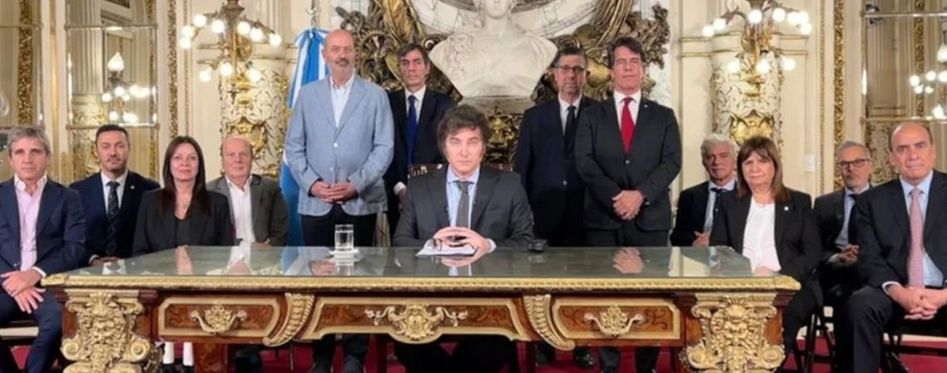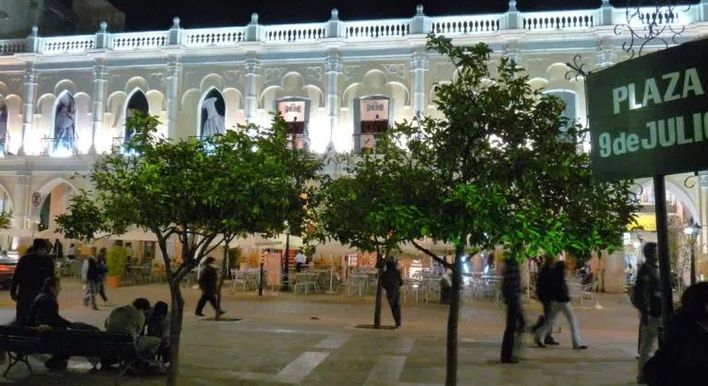Direct flights between Salta and Lima returned this month, as (entirely coincidentally?) Argentina’s new President took office and began the process of dismantling the structure of the state and liberating the markets.
A tour we think you'll love
Perhaps taking advantage of this wind of change, Latam has re-introduced flights to Peru’s capital three times a week, restoring a service which had been running until Covid struck and decimated the tourism industry.
The return of the Chilean/Brazilian airline was welcomed by Salta’s Minister of Tourism and Sport, Mario Peña, who said: “From Lima, tourists from different nations will be able to enter Salta directly, consolidating the province as a point of access to the country in the North.”
A combination of Covid and the unfriendly Peronist government of Alberto Fernandez led to Latam pulling out of operating internal flights within Argentina in June 2020, leaving Salta served only by Aerolineas Argentinas and the independent operators Flybondi and Jetsmart.
Aerolineas Argentinas has been running thrice weekly direct international flights to Sao Paolo since July last year, as you’ll know from a previous blog.
Flybondi and Jetsmart emerged during the deregulation of airline transport during the last non-Peronist government (Maurico Macri, 2016-19), so their future is looking brighter under the wild-haired libertarian now at the helm, Javier Milei.
Distinctly less rosy, however, are the prospects for the heavily bankrolled Aerolineas Argentinas.
Yesterday, among a raft of measures to “make Argentina great again”, the new President announced plans to privatise the nation’s flagship airline.
Aerolineas Argentinas was privatised once before, in 1990, by Carlos Menem (whose luxurious sideburns Milei also appears to favour): sold to the Spanish airline Iberia for US$900 million.
When re-nationalised in July 2008 by Cristina Fernandez’s government, the same amount of US$900 million was returned (this time to a private Spanish company, Marsans, who had been gifted the white elephant by the Spanish government).
The ICSID (International Centre for Settlement of Investment Disputes) later ruled the expropriation had been carried out improperly, and ordered Argentina to pay a further US$320 million (which I don’t think was ever paid!).
Before expropriation, the previous government of Cristina’s husband Nestor Kirchner was thought to be seeking investors for the airline, without success. Bear in mind that this was on the back of the soy boom: while now, as President Milei has said repeatedly: “There’s no money”.
The airline has long been a bugbear for free marketeers, bankrolled to the tune of US$8.3 billion since 2008 (a sweet US$555 million per year): that’s enough to buy the most valuable airline in the world, Delta, valued at US$7.3 billion by Brand Finance, and still have small change to buy several other independent airlines.
The (still current but presumably soon outgoing) President of Aerolineas Argentinas, Pablo Ceriani, boasted a few months ago that the airline now transports 13 million passengers a year (compared to 5 or 6 million on re-nationalisation 15 years ago), and is serving 21 international routes, 39 cities within Argentina, and 47 federal routes (linking cities like Salta with Iguazu, Mendoza, or Cordoba without routing through Buenos Aires).
All essential for tourism and business, but underpinned by eye-watering subsidies which will no longer be available.
Something clearly had to be done about Aerolineas Argentinas, but one dreads to think how much it will be worth on the open market.
The government’s emergency decrees were announced on the day opponents demonstrated in the streets to mark the 22nd anniversary of the repression which left 39 people dead during the gigantic economic crisis of 2001.
Milei’s raft of measures need approval by at least one house of Congress: while the Senate is still dominated by Peronists, in the House of Deputies the government can only achieve a majority by working with ex-President Macri’s Juntos por el Cambio party (many of whose members are in the government, so that is admittedly a likely scenario).
It could also be ruled unconstitutional by the Supreme Court if it’s considered that the emergency measures are not justified.
Incidentally, Argentina currently owes the IMF US$44 billion, and the latest interest payment of US$912 million is due today.
I will be returning in my next blog to the implications of the massive devaluation of the official peso and what that means for the blue dollar (and your holiday in Argentina!)
- Latam flights run from Lima to Salta every Wednesday, Friday and Saturday night at 23.55: and from Salta to Lima departing on the redeye (5.55am) Thursday, Saturday and Sunday.
- Jetsmart and Flybondi run between Buenos Aires and Salta: Jetsmart also carries flights to Neuquen, the gateway to tours of Patagonia, to Cordoba, home of historic Jesuit estancias and to Mendoza for Argentina’s best wine region.
- For all flights in and out and within Argentina bookmark AA2000.
- Here’s a BBC News report (in English) on Milei’s emergency decrees.







